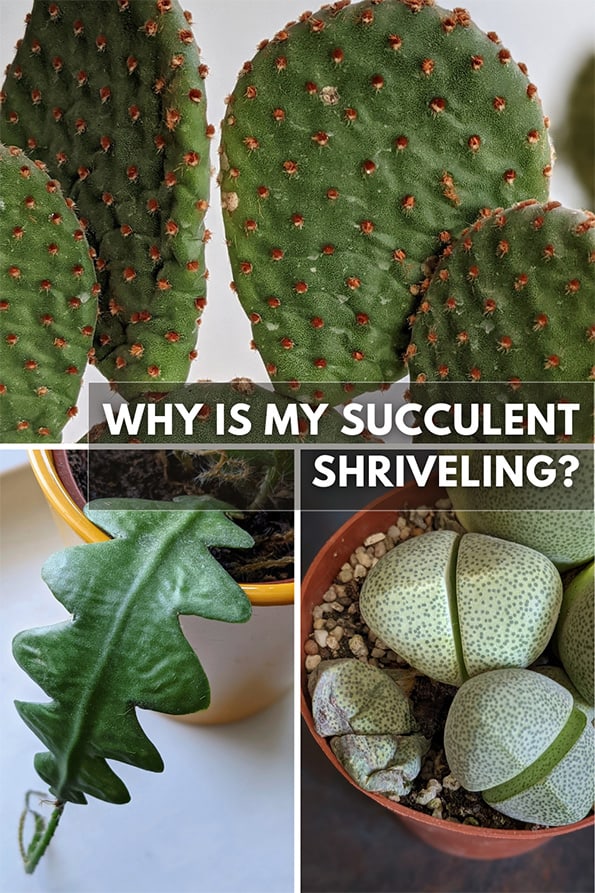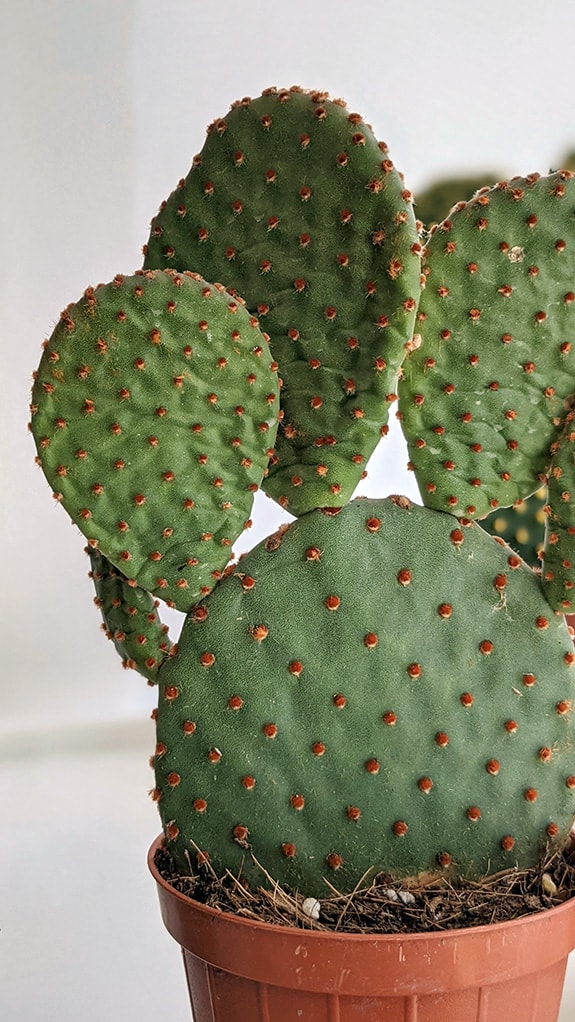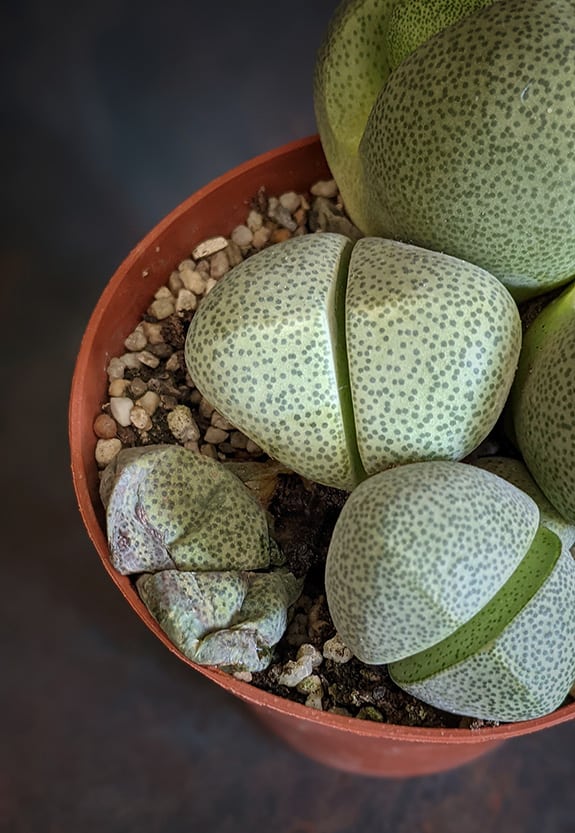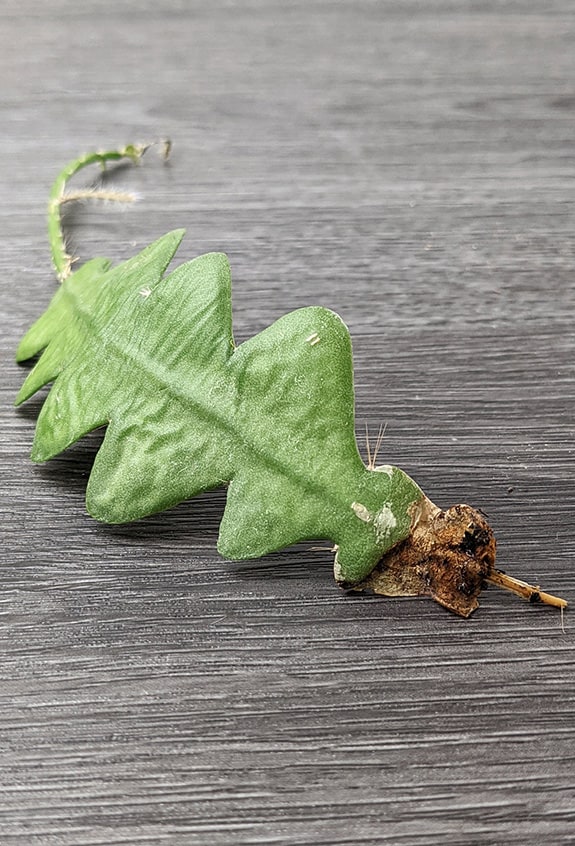By Tom Knight
"Why are My Succulent Leaves Shriveling?"
In most cases shriveling succulent leaves are indications of a watering issue. Either too little (underwatering) or too much (overwatering).
This article aims to help you identify which one has caused it and explore several solutions to help treat and fix the problem affecting your succulent plants.
Is your cacti or succulent shriveling? The most common reasons for this are underwatering and excess water.
One way or another, watering is the main cause of the leaves becoming like this. But there are also a handful of other explanations to explain why the leaves on your plant have started to wrinkle. I'll cover these, too, in case your watering skills are perfect and it's actually something else. So let's get started.
Contents
- Underwatering
- Overwatering
- Overwatering with Rot
- Other Possible Reasons
Underwatering Issues
Succulents are very well adapted to dealing with periods of drought. They can survive for long periods where other plants would be long gone.
This is mainly because succulents store water in their thick fleshy leaves and can restrict how much they use. However, even they have their limits and can't deal with too little water forever.
Underwatered succulents will have the following characteristics.
- Wrinkled or shriveled leaves with no moisture present.
When touching the leaves, they will have a dried out feel. Think of it feeling like a prune or dried apricot. There will clearly be a dehydrated feel.
- Potting Mix will be very dry.
If underwatering is the issue, the potting medium will also be clearly dehydrated and dry.
- The container itself will be very light.
A dried out potting mix with no water present is usually very lightweight. It's the moisture that provides weight to containers and gives them that hefty feel. All you need to do to check is judge the weight of the pot. If there is an underwatering problem, the container will feel very light.
This Bunny Ear Cactus (Opuntia microdasys) has shriveled upper leaves - A classic sign of underwatering. It needs a good drink of water, and it will bounce back within a day or two.
Not giving enough water sounds simple and easy enough, but sometimes other factors play a part.
- Lack of water.
As covered this is the primary reason underwatered succulents have shriveling leaves.
FIX - A good soak right now and in the future; watering more frequently will solve this problem. But also cross off the following four issues as they could ruin even the best watering schedule.
- Hydrophobic potting mix.
If you use peat, it will often become hydrophobic once it dries out completely. This means it resists water and won't absorb it easily. If drainage holes are present, when you water your plants, all the water will pour out of the bottom within seconds. You may think you've "watered" well, but none of that water has made it into the plant.
FIX -
Don't let your potting mix dry out completely, or shift to a different type of growing medium like coconut coir. You can also use bottom watering to give the medium time to absorb the water.
- Potting mix that drains too much.
Usually, adding fast draining inorganic materials to potting mixes is good for succulents, but new owners might add too much. If there is not enough organic material present, there is nowhere for water to be stored for the plant's roots to absorb it.
FIX - Check the mixture and material you're using. Repot if necessary. Use succulent soil or a cacti mix if you're uncertain about what to use.
- Rootbound succulents.
Small containers, relative to the size of the succulent plant and its root ball, will result in less space for moisture to be held.
FIX -
If the plant is rootbound / potbound, and there are issues with shriveling leaves, it could be time to consider repotting.
Overwatering Issues
Succulents and cacti expect sporadic watering, which is why they store large volumes of water where other houseplants don't. But what happens when there is too much water, and the plants can't contain it all? You guessed it - shriveling leaves.
What you're looking for on an overwatered succulent, though, is different; these are the characteristics to watch for.
- Wrinkled or shriveled leaves with moisture present.
Too much water will cause the leaf cells to burst, creating the inevitable mushy texture that clearly distinguishes it from an underwatered plant.
If you touch the leaves, there will be an obvious mush factor that's not present with underwatered plants.
- Bad Smell (Potentially).
If the overwatering is quite bad, rot may have set in, often creating a foul odor.
- Sodden Potting Mix (Potentially).
The potting mix could be saturated with water.
Frequent watering or too much moisture around the root system of Lithops Living Stones can easily cause mushy leaves like this.
Again giving "too much water" is often a simplistic answer. Usually, it's the growing conditions or materials causing the issue.
- Too much water.
The root cause of overwatered succulents shriving is due to excessive levels of moisture.
FIX -
Your conditions might be ideal, and it could be as simple as you constantly reaching for the watering can every few days and pouring on the water. If that's the case, the answer is to reduce the watering frequency (and potentially the amount) and let the potting medium dry out before adding more.
Very new owners may benefit from watering with ice cubes to help measure how much to give, or using a moisture meter can also help.
- Unsuitable Potting Mix.
Sometimes growers will sell succulents growing in very organic potting mixes that absorb and hold large quantities of water. Most succulents will benefit from adding inorganic material like grit or Perlite, which helps keep the mix open and free draining.
FIX - If your plant is growing in very dense and highly absorbent material, consider repotting using a better mixture.
- Unsuitable Planter.
Using a planter that cannot allow water to escape out of the bottom keeps too much moisture around the roots.
FIX -
I often say this in my articles, but it's an important tip, even for experienced plant parents. It's safer to grow most houseplants in containers with at least one drainage hole at the bottom of the pot. This helps provide better drainage by letting excess amounts of water trickle away.
- Not enough light and cool temperatures.
Most succulents need high light levels and warm temperatures to do well. If you don't provide this, they will grow very slowly and use only a tiny amount of water. This isn't always a problem, as many succulents will adapt to lower light levels and cooler temperatures, but overwatering is a strong risk factor when you grow them like this.
FIX - Move your plant to a warmer and brighter location in your home (most can take full sun, so they could make a good choice for somewhere with very bright light). You can also use a grow light to help. If you don't want to move it, reduce the frequency and amount of water you give your houseplant instead.
Overwatering with Rot
Okay, this one is caused by a combo of both underwatering and overwatering. You might be scratching your head thinking "What! How is that possible?". Well, let me explain.
An overwatered succulent can display problems anywhere on the leaf, but sometimes this is only at the base of the plant rather than on the leaf itself.
If the roots, base, or crown rots away, there is no way for water to be transported up to the rest of the stem / leaf. Essentially even if the potting mix is full of water, the upper parts of the leaf are cut off from this water source, and it becomes underwatered.
To identify if this is the issue you have, what you're looking for is the following.
- Wrinkled or shriveled leaves with no moisture present.
At first glance, this might suggest you have an underwatered succulent on your hands, but as per the above, that's not right.
- Lower down, you will find a rotting section of stem or if you remove the plant from its container, root rot might be happening.
If you see this, then you will know what the problem is.
- A combo of other signs could also be present.
For example,
wet potting mix and odors (I've covered all these in the previous section).
Heavy and regular watering when you don't have good drainage, a suitable potting mix, or allowing your plant to dry out can easily cause rot to set in. This can be seen on this Fishbone Cactus (Epiphyllum Anguliger).
Like before, too much water is a simplistic answer. The cause is often several factors coming together at once.
- All the causes identified with an overwatered succulent apply here.
This
often happens with prolonged "slight overwatering". Too much water, unsuitable potting mix, cold, low light locations etc. The top of the soil might have mold growing on it and the older or lower leaves may be going yellow more frequently.
FIX - If you catch it early enough you can follow my How To Save an Overwatered Succulent guide.
If you're too late then you could try to propagate replacement plants from the shriving leaves. It might be too late if the leaves are shriveled, translucent, and lifeless. Look at my "Am I overwatering" guide for more tips to try and prevent it from happening again.
Other Possible Reasons
I've covered all the main reasons why leaves on succulents might be shriving. However, there are a few other situations where this can also happen.
These are less likely than a watering issue, but if you've gone through the above and they don't match what you have, it's worth reading through these.
- Too much exposure to strong direct sunlight / high temperatures.
Intense sun and heat can sometimes cause plants to quickly lose an excessive amount of water within the leaves, this is common in many indoor and outdoor plants and you'll know it as wilting.
When it gets cooler / less sun, perhaps during the evening, the plants perk up even if you haven't watered them.
However, as mentioned, Succulents are adapted to harsh conditions, and wilting is unusual especially with indoor plants. If you think this is the problem, the answer is to cut back on so much sun or try and find ways to reduce the temperature in the growing location.
- The Plant has a storage organ like a caudex.
You might be mistaking wrinkling as a problem when it's normal. Certain houseplants store energy within tubers, bulbs, or a caudex. For example, the Adenium obesum (Desert Rose) Stephania pierrei (Stephania erecta).
They can experience rapid growth and this depletes the energy stores and can come across as shriveled. Over time, they will build back the reserves and plump back out. It's not usually a watering issue.
That's all the main issues that cause succulent leaves to shrivel. Put the information to good use and I hope it helps you to keep your plant healthy.
About the Author
![Tom Knight Tom Knight]()
Tom Knight
Over the last 20 years, Tom has successfully owned hundreds of houseplants and is always happy to share knowledge and lend his horticulture skills to those in need. He is the leading content writer for the Ourhouseplants Team.
Also on Ourhouseplants.com
Comments




